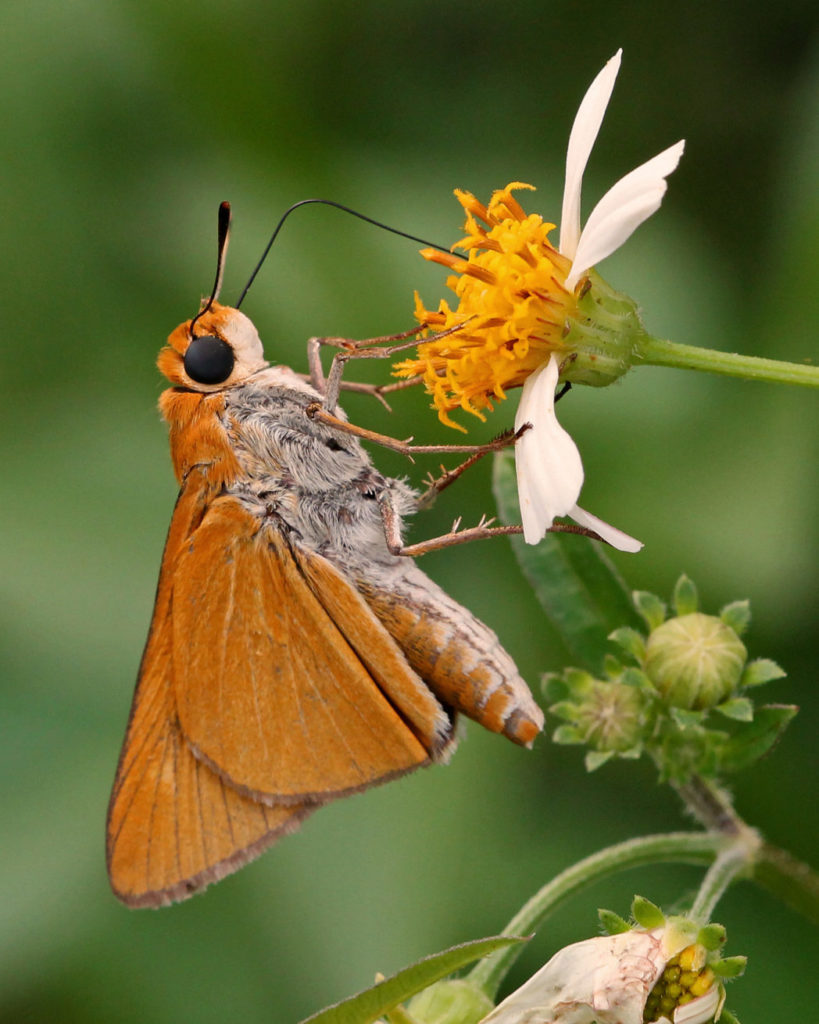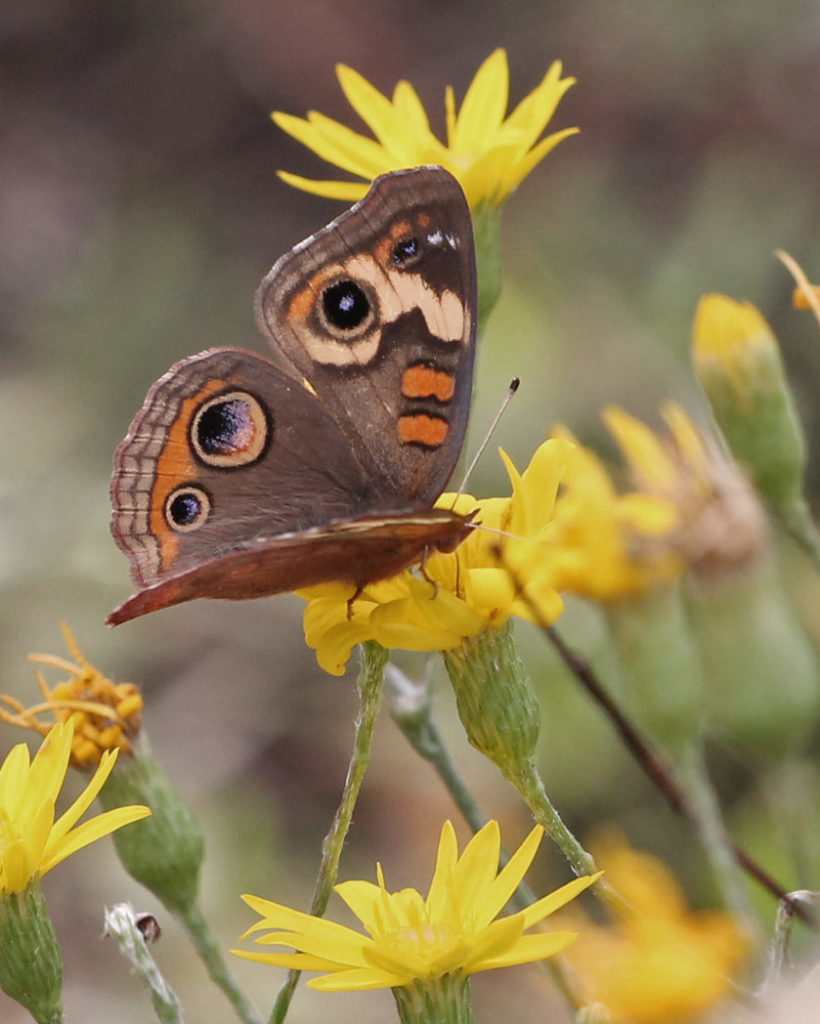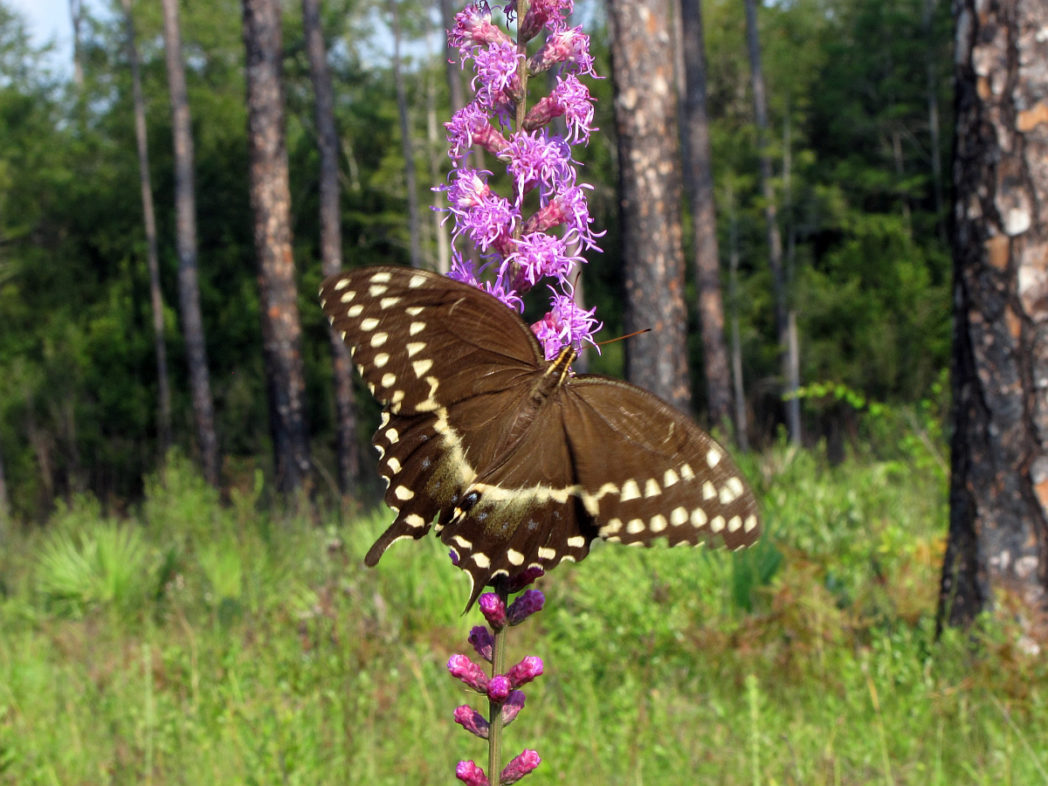Bloom Report: Spotlight on Butterflies
Pictured above: Palamedes swallowtail on Dense gayfeather (Liatris spicata). Photo by Jeff Norcini
Pollinators and the native plants that support them have come to the forefront this year. The showiest of the pollinators are the butterflies, which often are seen flitting around native wildflowers. While large butterflies like swallowtails (such as the one pictured above on Liatris spicata) can be seen along the roadside while traveling, the smaller ones likes skippers, hairstreaks, and blues are only seen when walking.
Many of our native wildflowers that bloom in the fall serve as nectar or host (larval, i.e., caterpillar) plants for our butterflies, and some even serve as both. Host plants attract females (which in turn attract males as one butterfly expert wryly noted) so wildflowers that serve as both would be expected to have a flurry of butterfly activity. The most common of these dual purpose native wildflowers is the oft-maligned Beggarticks (Bidens alba). It is ubiquitous, very common in disturbed areas, and a “sure thing” if you want to see butterflies — especially monarchs in the fall during their annual migration south.


Other common fall wildflowers that serve as host and nectar plants and that occur statewide include false foxgloves (Agalinis sp.), Swamp sunflower (Helianthus angustifolius), Narrowleaf silkgrass (Pityopsis graminifolia), Pinebarren goldenrod (Solidago fistulosa) and blazing stars (Liatris sp.), including the towering Dense blazing star (L. spicata), which occurs in wet areas and always seems to have swallowtails fluttering about them.
And last but not least, look for butterflies in the vicinity of bluestems (Andropogon sp.) and Lopsided Indiangrass (Sorghastrum secundum), fall blooming native grasses that are host plants and occur statewide.
For more information about Florida native plants that are butterfly nectar and host plants, see

